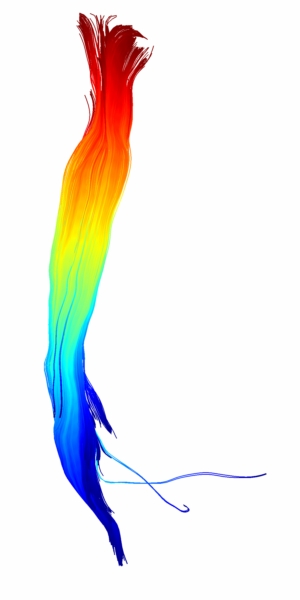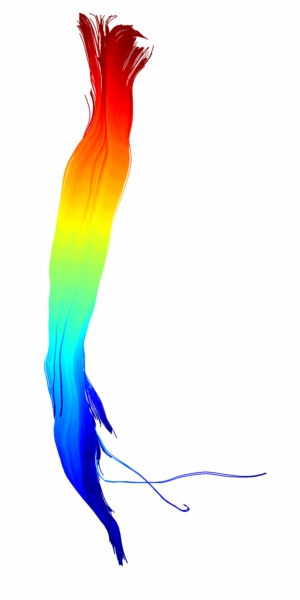Tie at center
With the default processing, each streamline is resampled so that it has the same number of points, spread evenly along its length. This prescribes 2 points of correspondence – one at either end. However, since the ends of the streamlines typically have higher variability (in FA estimates, geometric position, etc.), it can be desirable to prescribe an extra tie-down point somewhere in the middle of the tract. To do this, simply flag the tie_at_center option to trk_interp like this:
tracks_interp = trk_interp(tracks, nPts, [], 1);The way this method prescribes the central correspondence point is as follows:
- The number of desired interpolation points is modified to be an odd number, if needed.
- The mean tract geometry is calculated using the standard interpolation method.
- The midpoint vertex is identified on the mean tract geometry.
- For each original streamline, the vertex lying closest to this tract midpoint is identified.
- The original streamlines are then resampled in a modified way, such that (nPts-1)/2 vertices fall on one side of the midpoint vertex, and (nPts-1)/2 vertices fall on the other.
Using the example data, we can compare the default processing (left) with the modified version using the tie_at_center flag (right). The top panels show correspondence plots, where like colors indicate vertices that will be grouped together in the analysis. The bottom panels show the along-tract variation in FA for individual streamlines as well as the mean ± SD. Note the tighter coherence in the central portion of the tract when using the tie_at_center option.
| Original processing | Tie-at-center processing |
|---|---|
 |
 |
 |
 |
Back to Wiki Home